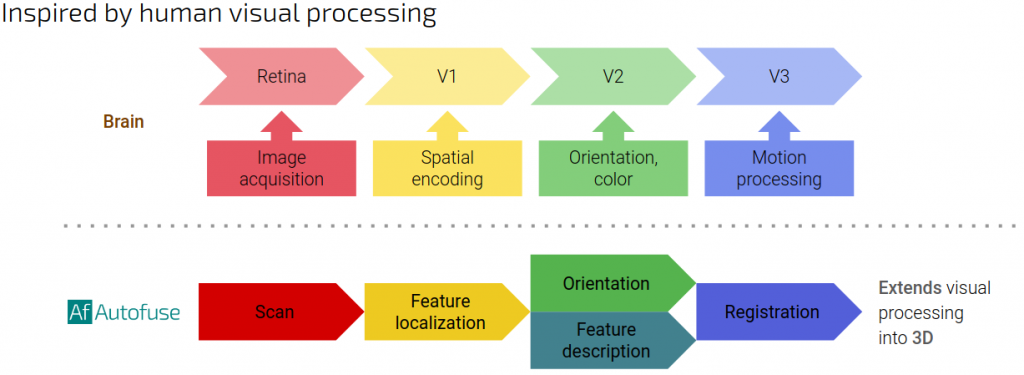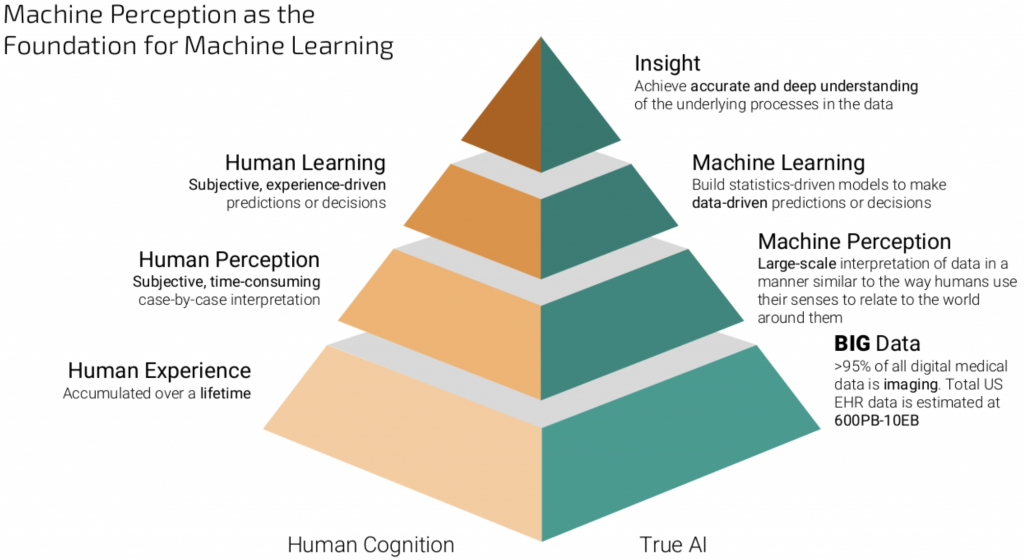Kris T. Huang, MD, PhD, CTO
In our last post, I introduced (perhaps more like re-introduced) the concept of machine perception (MP) as sort of a forgotten second cousin of machine learning (ML). Ironically, one of the first forms of neural network was dubbed the “perceptron,” a nod to the link between perception and intelligence. And while MP lives on and thrives today in fields like computer vision, it isn’t necessarily tied to ML.
The technology behind Autofuse sits firmly in the MP camp. It doesn’t involve ML, deep learning, or neural nets (for now), but it does closely emulate the high-level functionality of the human visual cortex (Figure 1) based on decades of neuroscience research, and in doing so inherits its extraordinary registration robustness and accuracy.
 Figure 1. Decades of neuroscience research have shown that the visual cortex of the brain abstracts and reduces visual data for higher processing. Autofuse piggybacks on this very successful architecture and extends the concepts from 2D vision into 3D.
Figure 1. Decades of neuroscience research have shown that the visual cortex of the brain abstracts and reduces visual data for higher processing. Autofuse piggybacks on this very successful architecture and extends the concepts from 2D vision into 3D.
As stated in our last post, MP is the ability of a machine to take sensory inputs and interpret the data in a human-like way. Using computer vision as an example, it structures, or extracts high-level data from, an image’s base pixels. A major benefit of MP is that by approaching the problem of human sensory integration using more conventional computational methods, MP systems are able to directly show its decision-making process, to provide warning when it is failing, and perhaps most importantly, the reason why.
 Figure 2. No more black box: machine perception technology in Pymedix Autofuse gives real time feedback showing the registration process in detail.
Figure 2. No more black box: machine perception technology in Pymedix Autofuse gives real time feedback showing the registration process in detail.
The transparency and monitoring ability afforded by MP are critical for safety-critical tasks. Autofuse can show the feature matching process as it occurs in real time, and it can show the intermediate results of its internal consistency checks. The result is technology that not only has the best robustness, precision, and accuracy, it has the unique ability to perform automated patient-specific QA that provides real estimates of spatial uncertainty.
MP + ML
ML systems require structured data in order to be trained. MP provides a biologically-inspired basis for structuring data. In the near future, we at Pymedix envision building advanced deep learning-powered analyses on top of our unique MP technologies with the ultimate goal of achieving deeper insight and understanding of cancer and cancer treatment.
 Figure 3. MP + ML = Pymedix
Figure 3. MP + ML = Pymedix

1 thought on “Perception as the Prerequisite for Intelligence”
Comments are closed.